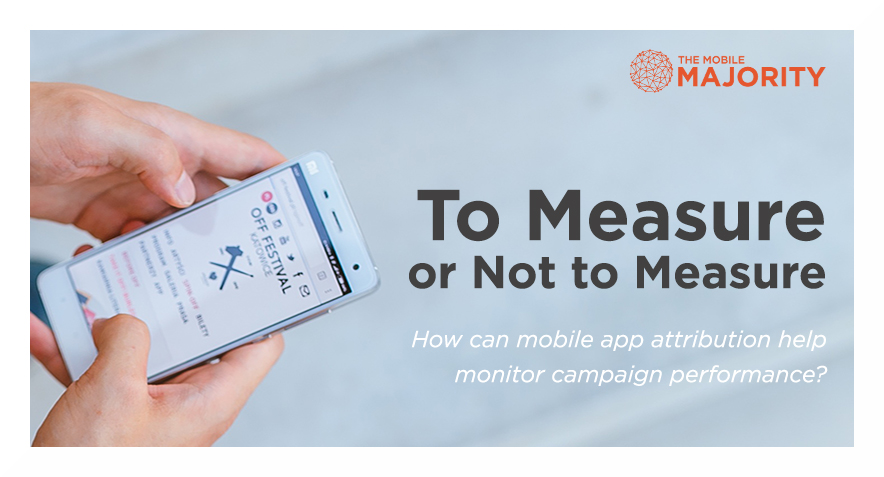Successful mobile advertising campaigns are made up of many important elements. By now, you’re probably already avoiding some common mobile advertising mistakes, which can definitely be beneficial to your brand. But if you fail to measure out just one critical ingredient correctly, it could cause your campaign to deflate — costing you time and money.
Thankfully, mobile app attribution tools and methods can help you monitor the effectiveness of your mobile ad campaigns, plus help you increase conversions, downloads and sales.
But what exactly is mobile app attribution, how does it work and what are some common tracking methods? This article will provide you with the basic know-how of mobile app attribution so you can implement the perfect tracking tools and methods for your unique campaigns.
An Overview of Mobile App Attribution
What is Mobile App Attribution?
In order to understand mobile app attribution, it’s important to first take a look at traditional online attribution methods. Things like cookies, image pixel tags, and adding custom parameters to a URL are all attribution methods that digital advertisers have come to know and love. These helpful methods are both easy to set up, and can aid marketers in determining which visitors came from certain sources: whether a new customer clicked on a link located in an email blast, or clicked through to your new blog post from a social media site.
Traditional digital marketing attribution methods are used widely in the industry because they are quite effective. That’s why mobile app attribution exists, as well. It’s just another way to measure the effectiveness of your cohesive marketing plan.
In mobile advertising, attribution refers to the process of tracking a user’s actions within a mobile app. This means that mobile app attribution tracks things like app installs, in-app purchase behavior, repeated app launches and level completions. All of this information is crucial to have on hand as it can help you determine the value of your ads, and where you might want to allocate your ad spend in the future.
How Does Mobile App Attribution Work?
Mobile app attribution can be complicated and a little frustrating because there isn’t an existing industry standard for measurement methodology. So, using well-trusted mobile app attribution tools are critical to your success in the mobile ad realm. In order to correctly attribute app installs and other consumer behaviors to particular ads, unbiased data must be provided to an attribution partner. Because several parties are involved in this process, it can bring up more issues of complexity. In fact, both Google and Apple block attribution companies from tracking users’ behavior within their app marketplaces.
So, does this mean mobile app attribution isn’t really that effective?
Not necessarily. It’s still a very valuable tool when it comes to creating your mobile ad campaigns. As a result of mobile tech giants blocking this type of tracking, attribution companies have used their tech skills to figure out ways to know what users clicked on ads, and also downloaded and opened apps. Ad clicks, engagement, impressions, social networks and more can all contribute to just that one install.
This brings us to the most popular, universal methods of mobile app tracking that attribution tools use for measuring the effectiveness of ad campaigns.
Mobile App Attribution Tracking: Main Methods
Mobile Device Fingerprinting
Fingerprinting (also called device fingerprinting, machine fingerprinting and browser fingerprinting) is the means in which a user’s mobile data is collected for the purpose of identification. This mobile app tracking method pulls basic user information like an IP address from mobile device headers to connect the dots between conversions. For example, if a user went from clicking on an ad to an immediate app install, fingerprinting could collect that individual’s user behavior. Not to get too technical, but fingerprinting basically works by redirecting a potential customer through measurement URLs, then attribution tools gather the publicly available data from HTTP device headers. From there, the information is analyzed to create a unique user fingerprint associated with the mobile device.
Identifier Matching
When a mobile app attribution tool aids the process of matching unique identifiers (whether a customer installs an app or clicks a mobile ad) it is done so in real-time — which saves you some of your own time to focus on other marketing matters. Automated tools typically support many of these unique user identifiers including app-to-app, web-to-app, iOS, Android and others. It helps to have a tool to do this for you because it saves the headaches of repeating this process manually when it’s time for end-of-month reports.
Location Tracking
Advanced geo-defined audience targeting offers marketers a way to fill in the holes created by traditionally desktop-oriented, location-based targeting. The current selection of location-based ad targeting broadly includes such methods as geo-aware ad placement, geo-fencing, and audience targeting. Big data leverage consumer information to properly buttress location analysis, tracking a user’s spatial behavior after ad exposure. Measuring large samples of these mobile users, either through first- or third- party reports, identifies consumer patterns and thus sheds light on the entire purchasing process.
Ideally, marketing professionals should heavily consider adding mobile app attribution to their advertising strategies to ensure that ads are actually working, or if they need to revamp their mobile ad campaigns to be more effective. After all, a significant part of marketing is the act of monitoring success.

